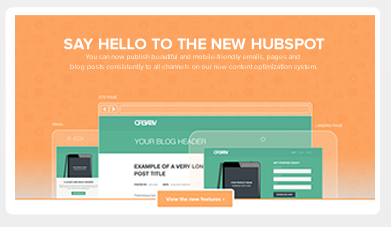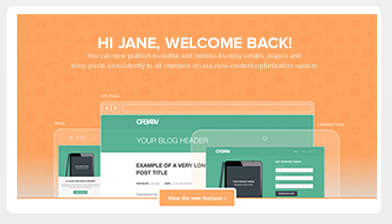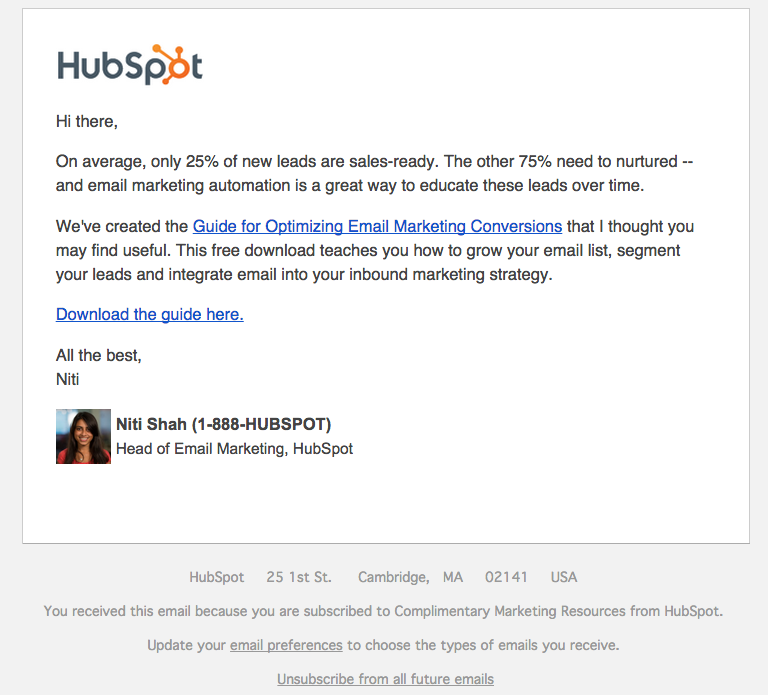Table of contents:
- Add forms to the pages that get the most traffic for better lead generation
- Measure the performance to boost lead generation
- Optimize each step of the lead generation process
- Start with a basic CTA on your homepage
- Offer e-books for download on specific blog posts
- Develop a live chat service for your website
- Personalize your CTA’s
- Test, test, test!!!
- Nurture your leads
I hope you have gone through our previous blog titled ‘Ultimate strategy to build a stellar website’ and have already built your stunning and alluring website.
If you haven’t read yet, please follow the link to know more: https://emergedigital.co/ultimate-strategy-to-build-a-stellar-website/
In this section, we will emphasize on different ways to optimize your website and drive lead generation.
It’s a no-brainer to customize the website to generate leads. But it is not as easy as dropping a “Click Here” button on your home page and watching the leads flood in, sadly.
Instead, a more proactive approach needs to be taken by advertisers and designers. We will go through a few fast approaches in this article that really work to optimize the website for lead generation.
To understand how to optimize your website, we’ll have to first gain a basic understanding of the lead generation process.
What components are at play when a casual website visitor turns into a lead?
When a website user clicks on a call-to-action (CTA) found on one of the website pages or blog entries, the lead generation process usually begins here. The CTA takes them to a landing page, which includes a form used to obtain contact information of the visitor. They are then led to a thank-you page after the visitor fills out and submits the form.
Now that we’ve gone over the basics of lead generation, we can get down to the details.
Want to create a stellar website for your brand click here to start your project now!
9 Ways to Optimize Your Website for Lead Generation
Let’s unpack nine simple ways to optimize your site for lead generation.
1. Add forms to the pages that get the most traffic for better lead generation.
Before you begin, it is important to benchmark your current lead generation status so that you can evaluate your progress and identify the places where advancement is most required. Any of your web pages might make perfect lead generators, and you don’t even realize that.
To start with, perform an analysis of your lead generators from where much of your internet traffic and outreach comes from. Here are some popular ways where a company might get visitors:
 Email Marketing: Traffic might come from users who click through to your website from one of your emails.
Email Marketing: Traffic might come from users who click through to your website from one of your emails.- Social Media: Traffic might come from users who engage in a campaign through one of your social media profiles.
- Live Chat: Traffic might come in the form of users who reach out to your customer service team through a live chat window on your website.
- Blog Posts: Traffic might come from your highest-performing blog posts.
Once you identify where your leads are coming from, you’ll want to make sure the pages they’re landing on are doing everything they can to nurture a visitor’s interest.
For instance, if you notice that most of your potential leads are clicking on inbound links from your Facebook page to your website using your analytics app, your next move is to refresh the sites they visit with content that holds them on and engages them with your website. Add longer-form information on the most viewed website pages that users can navigate via forms that require their contact details.
2. Measure the performance to boost lead generation.

Using a tool such as Website Grader, which tests your lead generation sources (including landing pages and CTAs) and offers input on how to enhance your current content, test how each of your existing lead generators contributes to your enterprise.
You may also equate landing pages that do better to landing pages that do not do so well. Let’s assume, for instance, you get 1,000 visitors to Landing Page A and 10 of those individuals have filled out the form and converted it into leads. You’d get a 1 percent conversion rate for landing page A. Let’s presume you have another landing page, Landing Page B, which helps 50 visitors for every 1000 visits to convert into leads.
That would be a 5% conversion rate — which is great! Your next steps could be to see how Landing Page A differs from Landing Page B and optimize Landing Page A accordingly.
You may finally try running internal reports. To decide which deals work well, assess landing page views, CTA clicks, and thank-you page shares, and then build more like them.
Want to create a stellar website for your brand click here to start your project now!
3. Optimize each step of the lead generation process.
If your visitor looked for ” How to add Instagram filters” and ended up on a blog post you wrote called “5 steps to get more likes on your posts,” you’d better not link the blog post to a snow-clearing recommendation. Make sure your deals are connected to the page they are on so that you can focus on the curiosity of users in a specific subject.
When an user lands on your website, you will continue to learn about their course of conversion to different pages or posts. When a visitor enters your site, this journey begins and finishes (hopefully) with them filling out a form and being a lead.
However, often the direction of an user doesn’t end with the intended target. You should refine the conversion route in such situations.
What? How? Take a note from the book of Surety Bonds. They failed to convert visitors at the pace they wanted, so they opted to run an A/B split test with Unbounce (two variations of a landing page to determine which techniques on each page worked better. Ultimately, they later transmuted a link to a button, added a form to their web page, and posed numerous questions about their forms.
The result? A 27% increase in lead generation.
If you want to run an A/B test on a landing page, be sure to test the three key pieces of the lead gen process:
- The CTAs
Use complementary colours for your site. Keep it simple — and try a tool like Canva to create images easily, quickly, and for free.
- The Landing Pages
According to one HubSpot survey, companies with 30+ landing pages on their website generated 7X more leads than companies with 1 to 5 landing pages.
For insight, here are 15 examples of well-designed landing pages you can learn from.
- The Thank-You Pages
Often, it’s the landing pages that get all the love in the lead generation process. But once the visitor is led to the thank-you page where he would submit the form and get converted into the lead, later shouldn’t be overlooked.
In addition to saying thank you, make sure to include a way to actually download the offer on your thank-you page for your new lead. You may also have social networking buttons and a form for another similar bid.
- Bonus: The Kickback Email
Once a visitor converts into a lead and their information enters your database, you have the opportunity to send them a kickback email, i.e. a “thank-you” email.
In a HubSpot study on engagement rates of thank-you emails versus non thank-you emails, kickback emails doubled the engagement rates (opens and click-throughs) of standard marketing emails. Use kickback emails as opportunities to include super-specific CTA and encourage sharing on email and social media.
4. Start with a basic CTA on your homepage.
If the architecture of your homepage is what attracts the eye of an individual, what holds it is the CTA. Do not bombard the guests, though with an invitation to see the longest or most intricate material that you have.
Your homepage is at the top of the marketing funnel and can deliver either a free trial or a recurring campaign subscription, such as a newsletter. Consider including one of the following CTAs on the front of your website:
- “Subscribe to get our latest updates”
Consumers typically expect their experience of surfing to be as non-hostile as their experience of shopping. When they first find the website, they’re just not able to make a purchase.
Invite them to subscribe to an email that notifies them about business changes and product developments to teach them about you with little initiative or attention on their part. Personally, follow up with those who want to remain on this mailing list to assess their interest and gradually turn them into marketing qualified leads (MQLs).
Want to create a stellar website for your brand click here to start your project now!
- “Try Us for Free”
Free trials and demos are a growing company’s bread and butter. They allow you to generate demand in your business and create a contact list of leads who are currently piloting your product.
On your homepage, have your product available to try for free for a limited time using a CTA and form where you can collect their names and email addresses. At the end of each active product demo, follow up with the user to see what they thought of it.
5. Offer e-books for download on specific blog posts.
Another non-invasive way to increase interest in your product is to develop blog content that encourages an ebook or whitepaper, where visitors to your website can learn more about the same subject they have already read about on your blog.
This is where search engine optimization(SEO) meets lead generation.
In order to rank your website on Google, blog content is your way of establishing the page authority required. Organic Google visitors are also more keen to discover answers to an issue that you can fix, making this form of lead generation very useful.
Conduct keyword research on a subject that is important to your business to begin with and build a community of blog posts around this topic. Then, draft a study report that provides insight into this subject with much more details and clarity.
Package this report into a PDF or generate a link to your blog on your website so that by clicking the link the user is directed to the blog on your website. This gives users the freedom to surf through your website and search for more contents of their relevance. These blogs can be accessed by your readers using their name, business, and email address.
Email each person their downloaded resource using the three-part transfer route mentioned above, monitoring them with a kickback email that maintains the interest of each lead in the information you have given them.
6. Develop a live chat service for your website.

Live chat services are increasing not just in their sophistication, but in how many people expect them when learning about vendors they might want to buy from. This means you could be missing out on a major lead generator.
Audit the website and see which sites your users spend much of their time on and create leads through live chat. You can add a live chat tool on the pages where customers need the most support or information, with the right development resources. This helps you to gather and log information into their product preferences casually whilst answering their questions.
You can also align your customer service team with your live chat feature, based on who begins the chat and the questions your users have. This means that any website user, no matter where the talk goes, has their needs met.
7. Personalize your CTAs.
Dynamic content helps you to appeal to each specific web user with the experience of visiting your website. People who land on your platform can see photos, icons, and choices for goods that are directly targeted to their tastes, the sites they have visited, or things they have already bought.
Finest still, 42 percent more visitors are turned into personalized calls-to-action than basic calls-to-action. Dynamic content and on-page personalization, in other words, help you create more leads.
How does it work? Here’s an example of what your homepage may look like to a stranger:

And here’s what it would look like to a customer:

Notice the “Welcome Back” header? Visitors who see website pages that remember them from an earlier date a more inclined to stick around and start a conversation with you.
To get dynamic content (or “smart content”) on your site, you’ll need to use a tool like CMS Hub.
8. Test, test, test!!!
We can’t emphasize this part of the process enough. A/B testing can do wonders for your click-through rates.
For example, when friendbuy tried a simple A/B test on their calls-to-action, they found a 211% improvement in click-throughs on those CTAs. Something as simple as testing out the content of your CTA, the landing page layout, or the images you’re using can have a huge impact, like the one friendbuy saw.
9. Nurture your leads.
Remember: no lead can become a client, magically. Leads are just as successful as the attempts to nurture them.
Once they fill out a questionnaire on your landing page, put leads into a workflow so that they do not forget about you and offer them useful content and personalized recommendations that suits their interest. Lead nurturing should begin with appropriate emails for follow-up that provide great content. As you foster them, think about them as best as you can, and then tailor all potential deliveries accordingly.
Here’s an example of a lead nurturing email:

This email offers the recipient some great content, guides them down the funnel, and gets to the point. According to Forrester Research, companies that nurture their leads see 50% more sales-ready leads than their non-nurturing counterparts at a 33% lower cost. So get emailing.
You depend on leads to close sales and grow your business. Using the tips above, you can take advantage of every opportunity without letting unsatisfied website visitors slip away.

Post Credits: https://blog.hubspot.com/marketing/optimize-website-for-lead-generation
If you want to build a STELLAR and an ALLURING website, Please visit us: www.emergedigital.co. We are a website development company based in Mumbai. We provide all kinds of services from website design to brand marketing and digital marketing.
Drop us a message at priya@emergedigital.co

 Email Marketing:
Email Marketing:

